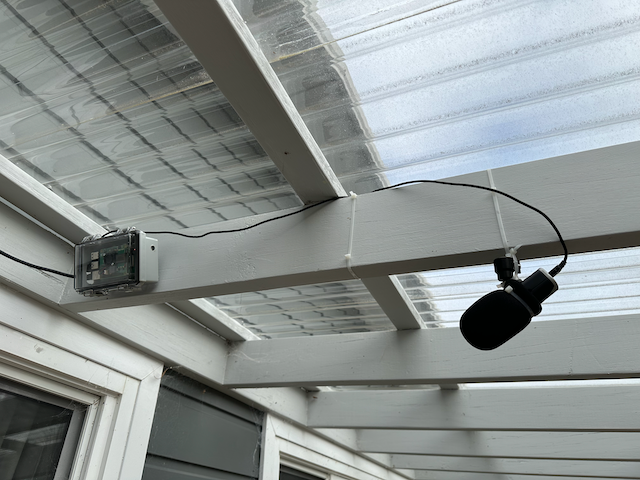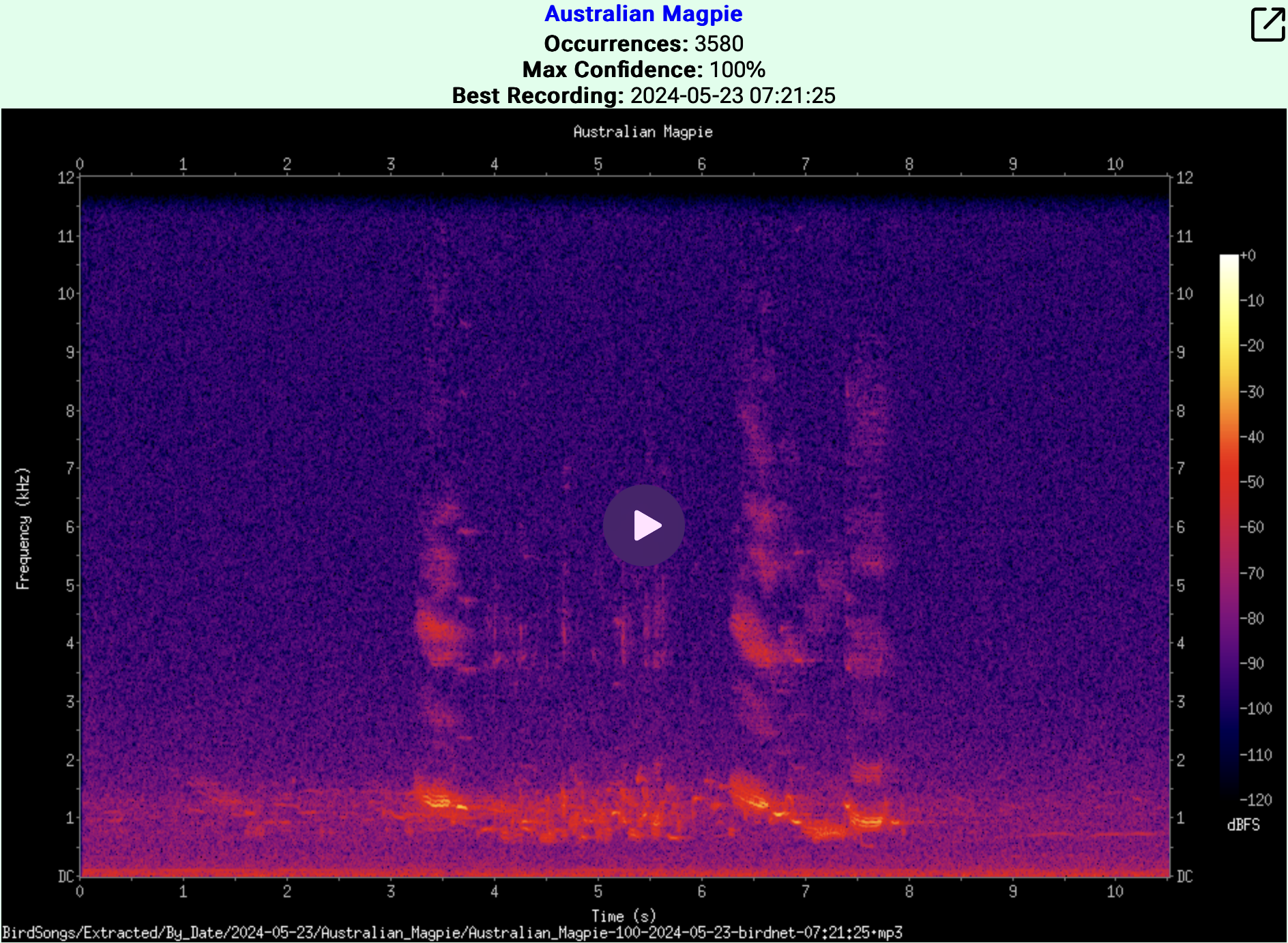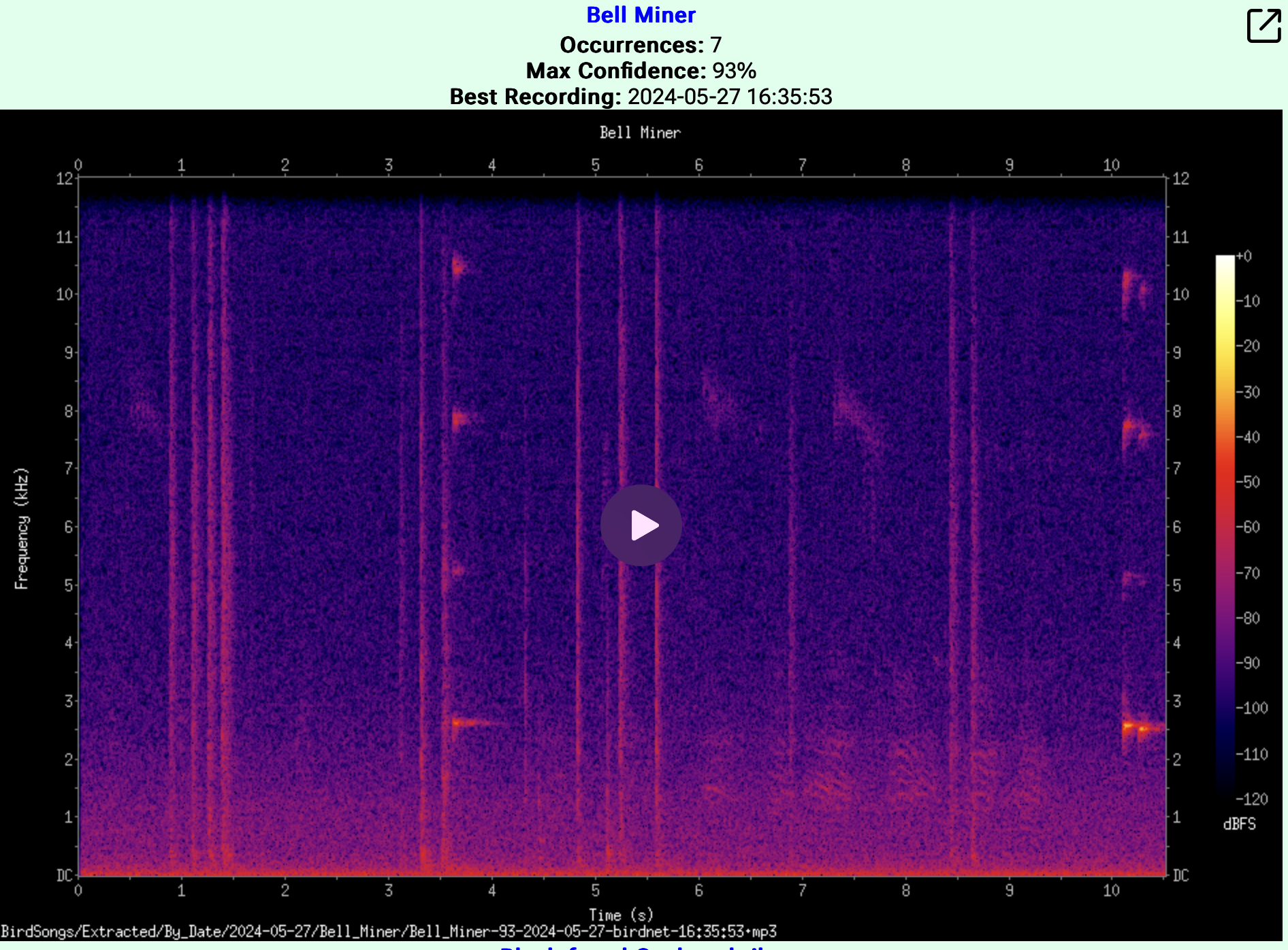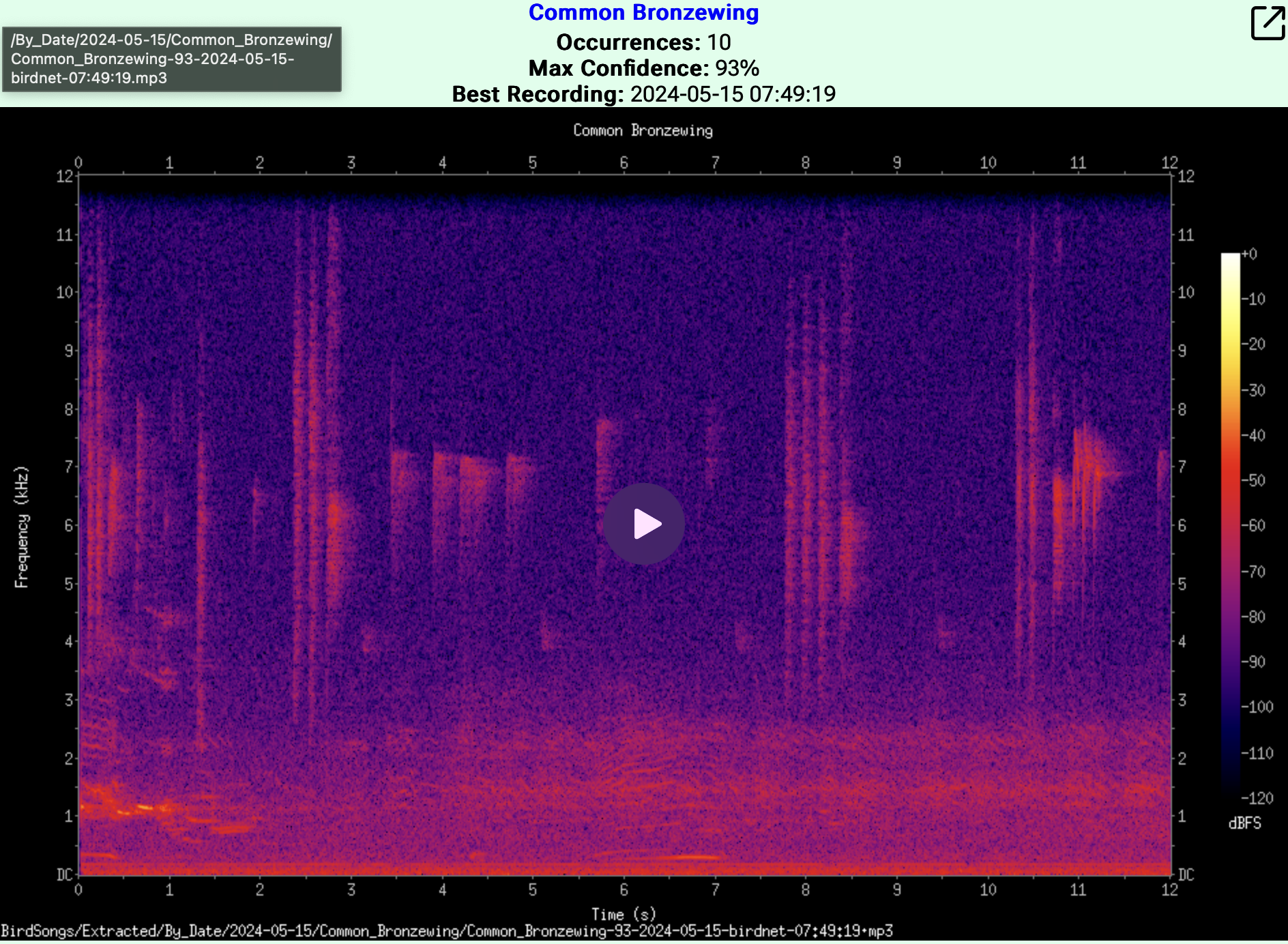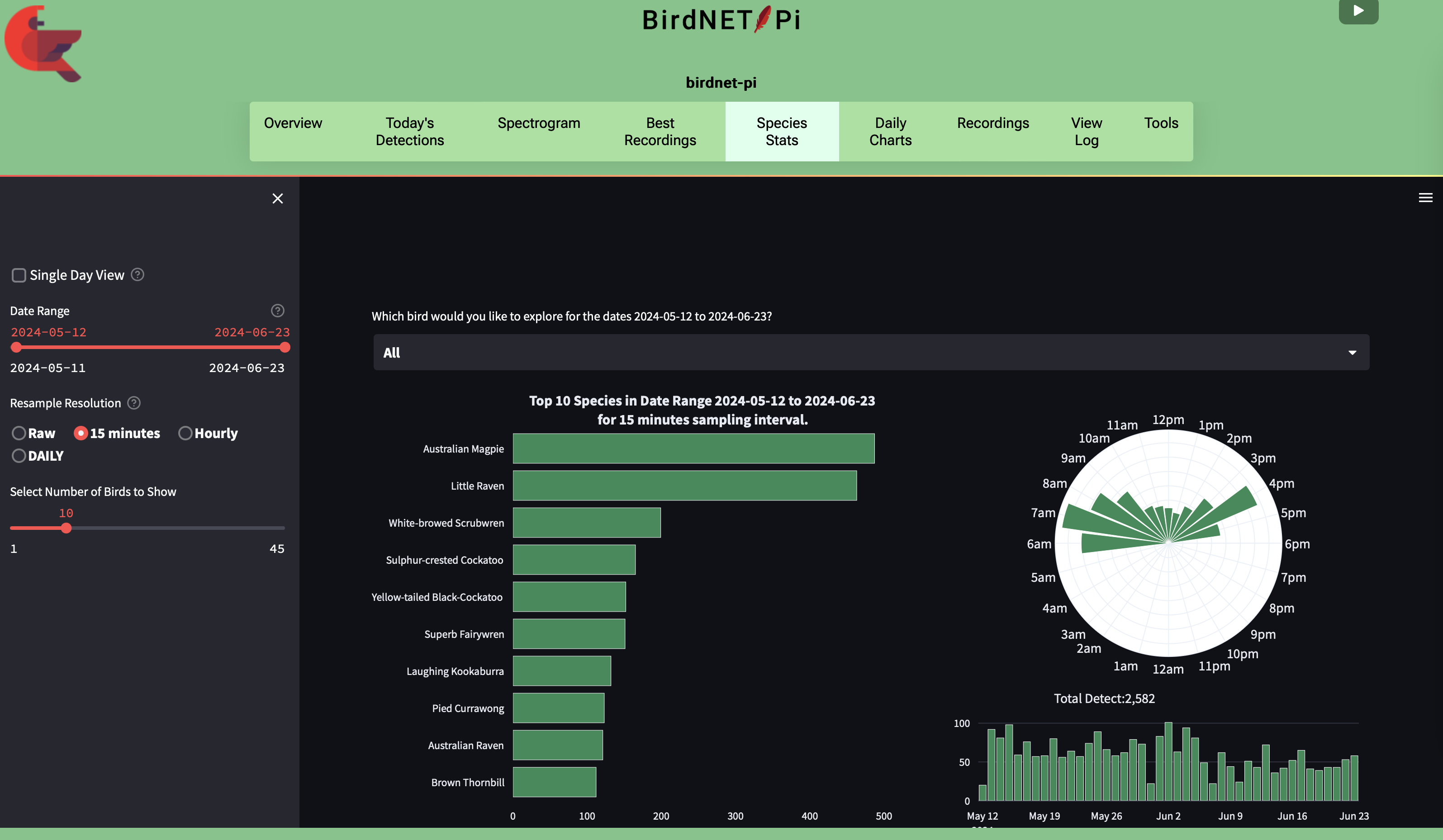Bird call sensor network
From our initial two BirdNET monitoring stations, the OCSN Birdcall Network has now expanded to 6 stations with more potentially on the way. We hope to deploy many more if there is interest, particularly further from town. At the moment all the stations are within 15 kms of Oberon, so there’s a lot of the LGA not currently monitored. So far all stations have been self funded by OCSN members but hopefully with financial support from various sources to offset the modest costs involved, future stations may be able to be at least partially subsidised.
BirdNET
Another potential project for OCSN is the establishment of a BirdNET bird call monitoring network to collect data on the prevalence of various bird species in the Oberon LGA.
BirdNET is a citizen science initiative developed at US Cornell University Laboratory of Ornithology and at Chemnitz University of Technology in Germany. It uses advanced machine learning models to automatically identify bird species from sound recordings collected by citizen scientists around the world. Although it cannot identify every bird species from their calls (and some birds have no calls), it nonetheless has quite good coverage of Australian bird species.
Recordings can be collected via an app running on a smartphone, using the built-in microphone or a better external microphone, or they can be collected by a small, low-power Raspberry Pi computer (not much bigger than a deck of playing cards) set up in a fixed location. Old, no longer needed smartphones installed in fixed locations can also be used.
Ready-made and packaged Birdweather PUC devices are alos available for about AU$400, as shown below. This is probably the easiest but also the most expensive way to establish a BirdNET listening station that automatically records bird calls, identifies the species of bird and uploads the data to an international citizen science database.
It is also possible to construct your own BirdNET listening station using a Raspberry Pi computer, and external microphone and the free, open-source BirdNET software package. The steps involved are described in detail in this blog post from Core Electronics, a very good hobby electronics supplier located in Gosford, just north of Sydney. Below is a great video from Core Electronics explaining how to set up a BirdNET-Pi listening station:
As mentioned, the third option is to use a smartphone which is no longer required.
BirdNET-pi local web site
Each BirdNEtT station provides a local web site, accessible on your home wi-fi network, providing details of what species it has identified, including playback of the recordings is has made. Below are two screenshots of the local web site for the BirdNET-pi station operated by an OCSN member, and some example spectrograms of detected bird calls are shown in the margin.
Developing an Oberon LGA BirdNet network
The first steps for an OCSN project would be to quickly evaluate these three options at a few listening sites provided by OCSN members.
Following this evaluation, a larger scale roll-out of a BirdNET sensor network in the Oberon LGA on private members’ properties and on public or state land, subject to appropriate permission, is planned. At the moment, there are two BirdNET stations in or around Oberon – there are several more in the Blue Mountains, as shown in this screencast of the global BirdNET map:
The current OCSN LGA BirdNET Network consists of the following stations:
- Station 1: BirdNET Pi at Chatham Valley
- Station 2: Birdweather PUC at Butterfactory Lane
- Station 3: BirdNET Pi at Reef Road
- Station 4: BirdNET Pi at Lowes Mount
- Station 5: Birdweather PUC at Edith
- Station 6: Birdweather PUC at Baileys Lane
There are also two stations outside of Oberon which provide OCSN with comparison data, one in Canberra and one in Lilli Pilli, on the southern edge of Sydney right next to the Royal National Park.
Birdweather Links
Birdweather provides access to bird call data from all Birdweather PUCs and BirdNET Pis at this online app:
Birdweather PUCs also have weather, air quality and motion sensors. Below are the links for access to the sensor data from the OCSN Birdweather PUCs:
PUC-4632 Oberon Citizen Science Network station 2 at Butterfactory Lane
PUC-9269 Oberon Citizen Science Network station 5 at Edith
PUC-9336 Oberon Citizen Science Network station 6 at Baileys Lane
The sensors available on these pages are:
Developing Reports of Birdcalls from the Network
Work is progressing on developing reports to summarise information from the OCSN BirdNET Network in meaningful ways.
Currently these reports are run manually each month, but plans are in pace to eventually automate them as part of the website. Due to the large quantities of data included in the reports, they are presented in a combined pivot table heat map style.
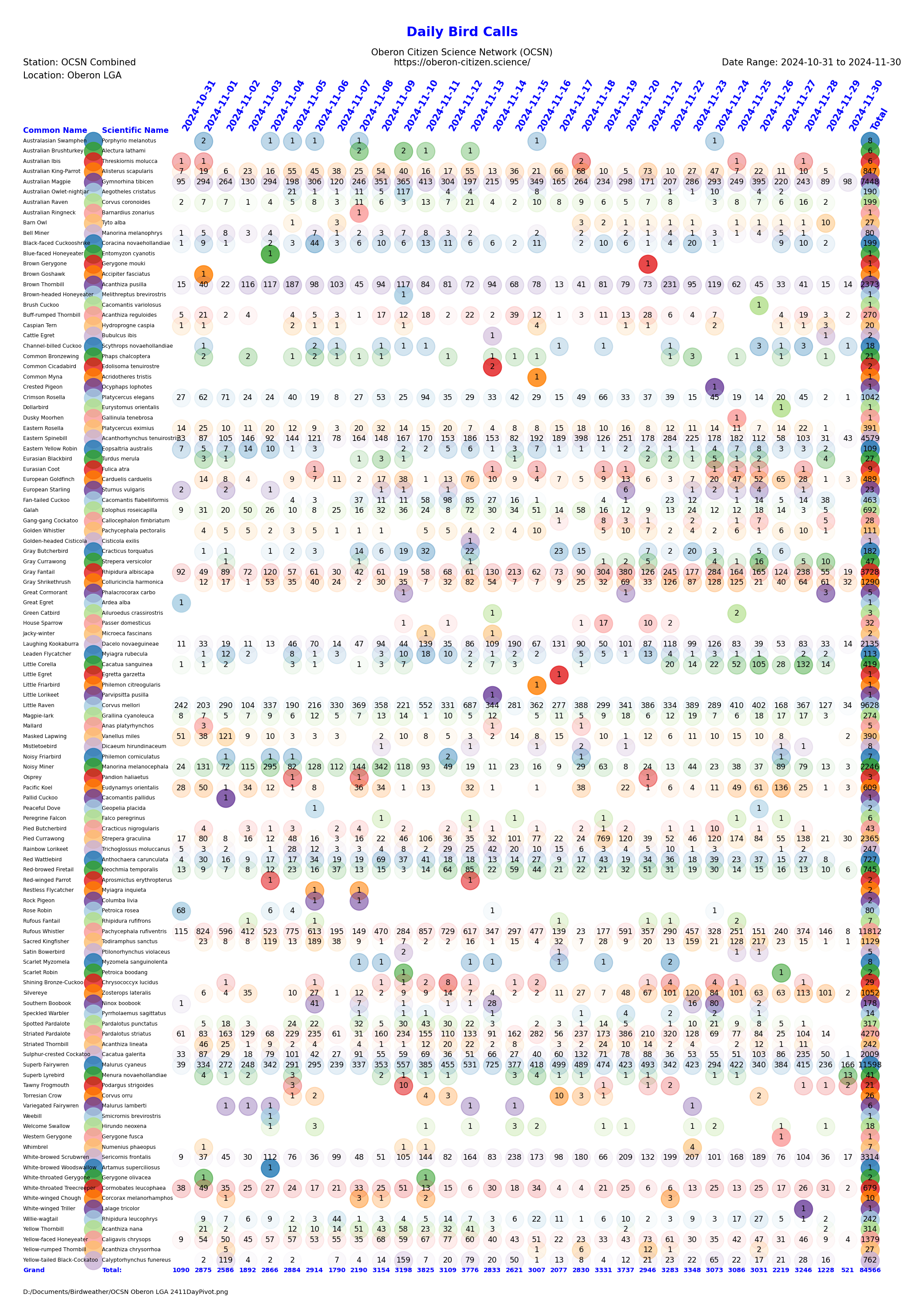 The Day Call Report summarises the number of calls per day for each species over a month. Each station has its own report as well as a combined overall report for the whole network. This potentially allows behaviours such as arrival and departure of migrating species to be detected, as well as tracking movements of nomadic feeders within the LGA. It may also give clues to when birds are breeding and nesting.
The Day Call Report summarises the number of calls per day for each species over a month. Each station has its own report as well as a combined overall report for the whole network. This potentially allows behaviours such as arrival and departure of migrating species to be detected, as well as tracking movements of nomadic feeders within the LGA. It may also give clues to when birds are breeding and nesting.
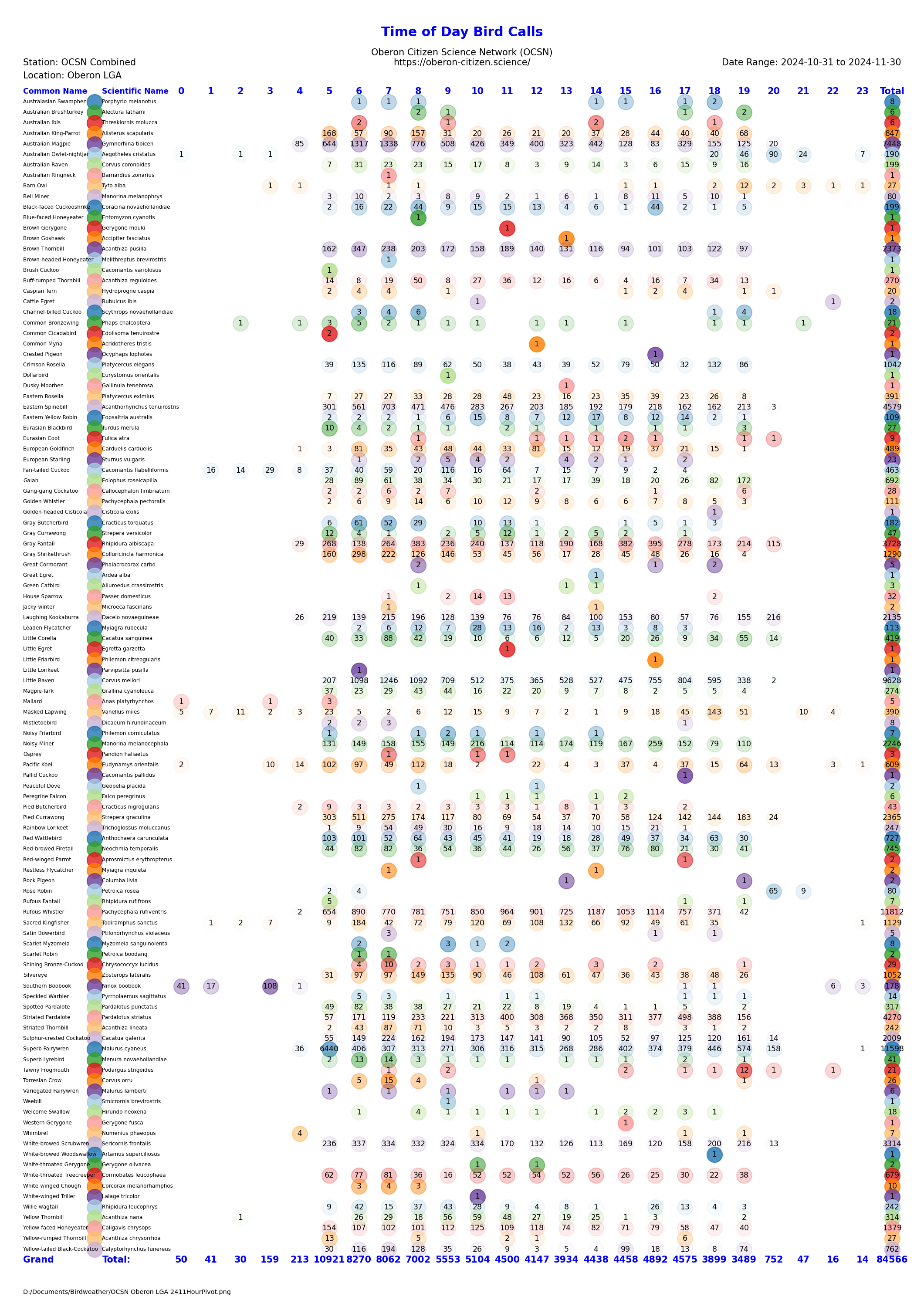 The Hour Call Report summarises the time of day when the calls are detected, again for each species over a month. Each station has its own report as well as a combined overall report for the network. Most notably, this report highlights birds that are active nocturnally because they call while other species are sleeping. Changes in hourly calls may also be associated with breeding and nesting and other behaviours.
The Hour Call Report summarises the time of day when the calls are detected, again for each species over a month. Each station has its own report as well as a combined overall report for the network. Most notably, this report highlights birds that are active nocturnally because they call while other species are sleeping. Changes in hourly calls may also be associated with breeding and nesting and other behaviours.
QUT Ecoacoustics and Ecosounds.org
There is also an Australian project undertaken by the Ecoacoustics research group at QUT (Queensland University of Technology). Collaboration with that group and use of their software bird call system may also be possible, using the same hardware listening stations used for BirdNET. Please see the ecosounds.org web site for more details. The software system developed is now maintained by Open Ecoacoustics, which is also a possible partner for projects with OCSN. There is a registry of already trained automated AI recognisers for Australian bird species, and it is possible to train more.
Bird populations and Wind Farms
As mentioned on the FrogID page, some large wind farm developments are proposed for Oberon LGA. One concern or consideration when evaluating such proposals is the effect which the wind farm construction and then the wind turbines themselves may have only the local environment and ecology. In order to assess such impacts, it is vital to record reliable, scientifically valid data on the prevalence of various bird species in areas around proposed wind farm sites. Ideally baseline data should be collected, before any construction starts, then comparable data during the construction phase and then during operation of these facilities, on an ongoing basis.
It appears that detailed bird species prevalence data has not been collected for the proposed wind farm site at Paling Yards, with the EIS relying on existing and very sparse ecology databases. This is a deficiency and data gap which OCSN members, in conjunction with university-based academic partners such as the QUT Ecoacoustics group, can potentially address. This is particularly important for the proper assessment of the potential environmental impact of the proposed Pines Wind Farm.


